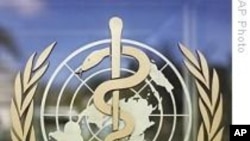The World Health Organization says health risks posed by exposure to low concentrations of Radon gas are more significant than first reported.
"There is now more scientific evidence about the effects of the gas," said Ferid Shannoun, a leading researcher with the Geneva, Switzerland-based organization.
"People living in homes can now be affected by much lower concentrations [of Radon gas] than we found in earlier studies," he said.
WHO first began studying the effects of Radon on health in the 1980s and released its first landmark study in 1996.
An Unseen KillerOverexposure to Radon is the second leading cause of lung cancer in most countries after smoking. "For people who do not smoke, exposure to Radon gas is the primary cause of lung cancer," said Shannoun.
The EPA estimates that 20,000 people die in the United States each year after exposure to high levels of the gas.Dealing with Radon
Cancer causing levels of Radon are mainly found in enclosed spaces such as homes or buildings. The U.N. health agency has sharply reduced the amount of Radon in homes and buildings that should not be exceeded for them to be considered safe.
The WHO's new recommendation is close to the limit for safe homes set by the U.S. Environmental Protection Agency, but two to four times less than Radon levels considered to be safe in most other countries.As part of its initiative to reduce lung cancer,
the WHO has published a handbook suggesting ways of improving
indoor air quality. Among its recommendations are testing for Radon levels in homes, as well as providing methods of constructing or retrofitting homes and buildings to improve ventilation, thus reducing exposure to Radon.





